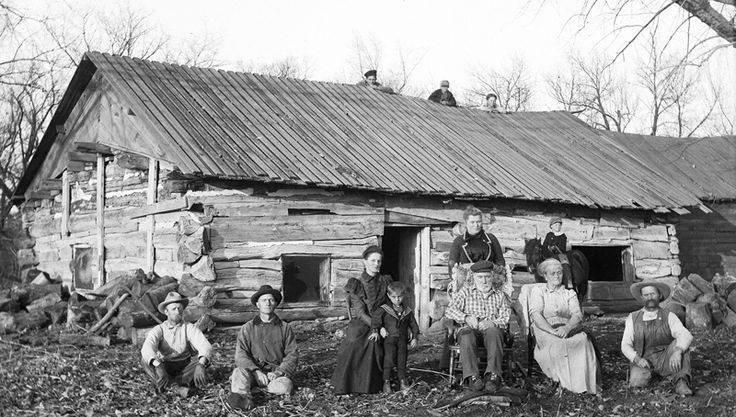Cooking was a major part of each day. Early settlers butchered their own meat and made corned beef, sausage, smoked and dried meats. Large gardens yielded produce for canning, pickling and other preserves. Root cellars stored potatoes, carrots, and onions. Milk was separated into cream for butter and baking and milk for drinking. Breads, cakes and pies were of course all baked at home from scratch from whatever was available.
For the most part meals were informal and the food hearty. Nothing was wasted. Dried bread was made into bread pudding; a bone was turned into soup and extra milk was made into pudding or cheese. Often there was a shortage of some ingredient. As you will see from the recipes, many are based on very basic ingredients and several on how to make a meal with only a few ingredients. Recipes would not only be for food but also for perfume, home remedies, wine and soap making.
Recipe books were not common and cooking was very much a passed down art or trial and error. It is interesting to read recipes from this period, as often they are vague and written with a few small hints that only the person who wrote them would understand.
Pioneer women who had to decide what few precious things to carry across the plains surely made one choice in common—their own individual collection of “receipts,” as recipes were then called. For them, these were reminders of a security left behind and a hope for the abundance of the future. In the interim, they simply did what they had to do to keep their families alive.
Many early memories of pioneer food concerned the frugality with which the Saints lived: “We lived on cornbread and molasses for the first winter.” “We could not get enough flour for bread … so we could only make it into a thin gruel which we called killy.” “Many times … lunch was dry bread … dipped in water and sprinkled with salt.” “These times we had nothing to waste; we had to make things last as long as we could.” *
No doubt the “receipt” books were closed during these times, and efforts were given simply to finding food and making it go as far as possible.
But slowly, even out of this deprivation, recipes grew. The pioneer women learned to use any small pieces of leftover meat and poultry with such vegetables as they might have on hand—carrots, potatoes, corn, turnips, onions—to make a pie smothered with Mormon gravy.
20 Lost Recipes From The Pioneers
Side Pork and Mormon Gravy
Mormon gravy, common fare among the early settlers and apparently a creation of necessity expressly for the times, is still hearty and nourishing for many of this generation who like to make it with ground beef or frizzled ham or bacon and serve it over baked potatoes.
8 thick slices side pork (or thick-cut bacon strips)
4 tablespoons meat drippings
3 tablespoons flour
2 cups milk
Salt, pepper, paprika
Cook meat on both sides in heavy frying pan until crisp. Remove from pan and keep warm. Measure fat and return desired amount to skillet. Add flour and brown slightly. Remove from heat and add milk, stirring well to blend. Return to heat and cook and stir until mixture is thick and smooth. Season to taste. Serve with side pork on potatoes, biscuits, cornbread, or even pancakes.
Mud apples
This is a variation on a Native American cooking method.
You will need
4 large apples
A bucket of mud
Coat the apples with about an inch of mud on all sides, being sure that the mud is of a nice thick consistency. When the fire has burned long enough to make some coals, have your adult help you to scoop some of the coals to the side. Bury the apples in the coals, and leave them there for about 45 minutes. Scrape away the cooled coals. Knock the dry cooked mud off of the apples and discard the skins. Spoon up the sweet steamy pulp for a surprising treat.
Some groups of Native American people used a mud coating on their food as a sort of oven. The steam from the mud would keep fresh-caught fish moist, and as it dried and became clay-like, it protected the food from burning. When the mud was peeled off, it took a lot of the fish scales with it. A delicious instant meal.
